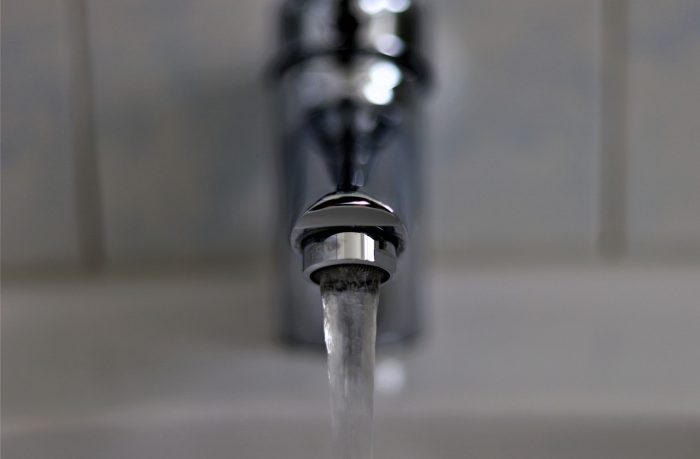
Do you have trouble determining when to replace the activated carbon filter in your home? For more information, keep reading. If you want the best water to drink, you must maintain your activated carbon filter, which is a part of your water filtering system.
Among the most noticeable indicators that it’s time to replace your activated carbon filter is a change in the color or taste of your drinking water. If you see any of these changes in the water, it’s time to inspect the cartridges in your activated carbon filter.
Activated carbon filters’ lifespans vary with use and other conditions. For this reason, it is essential to change them at the recommended intervals to maintain clean water, good taste, no odor, and overall safety.
Reasons to Change Your Activated Carbon Filter
Even though it might not be immediately apparent, there are a few warning signs that it is time to replace your activated carbon filter.
- Problems with your activated carbon filter might lead to more serious issues down the road.
- The possibility of jams or slower machine performance is another sign that the filter cartridges need checking and replacement.
- If the color or flavor of your drinking water changes, it’s probably time to inspect the carbon cartridges. This is one of the most noticeable signs.
By keeping an eye out for these indicators, you can keep your filter at your house or office clean and in good working order.
Here’s how to clean an activated carbon filter.
- Avoid Scrubbing
The porous surface of carbon media is essential for filtration; therefore, be careful not to brush it too vigorously. Soaking with a gentle swirl will do the trick. Extra caution should be exercised when dealing with carbon.
- Vinegar or Hydrogen Peroxide
Some people use white vinegar or diluted hydrogen peroxide instead of lemon juice to help sanitize and deodorize. Prior to rinsing, let the carbon soak for one hour. Stay away from bleach solutions because they break down the carbon.
- Soaking in Solution
For a more thorough cleaning, create a mixture of salt, lemon juice, and warm water. Toss the activated carbon about occasionally while it soaks for one hour. The salt abrasion scrubs the carbon surface, and the acidity dissolves mineral scales. Thoroughly rinse.
- Simple Rinsing
Rinsing the filter under running water removes loose granular material and sediment, making it easy to maintain. While rinsing, gently swish the carbon grains around.
- Reactivate in the Oven
If basic cleaning doesn’t restore the filtration capacity, you can try “reactivating” the carbon in the oven at 120 degrees Celsius for half an hour. This process destroys organic pollutants. If the performance is still poor, replace it.
 When to replace carbon filters
When to replace carbon filters
Determining the approximate time until a carbon filter needs replacement depends on a number of variables. Some of these criteria are:
While an activated carbon filter is great for maintaining a healthy and clean environment, it isn’t indestructible. If you want your filter to last as long as possible and keep your house or office air clean and safe to breathe, you must know when to replace it.
Activated carbon filters typically require replacement every one to three months, though this might vary depending on the brand.
Use Duration
To restore full performance and efficacy, it is important to change the carbon filters of your water filter when they are due. The best approach is to look at the amount of time that has passed since you last replaced the activated cartridge.
This time frame highly depends on the frequency with which they are utilized and the quantity of toxins in your water. Carbon filters can become clogged and less effective over time, and if not properly maintained, they might damage your equipment.
The key to an effective maintenance plan is learning to recognize the signs of filter failure, such as powdery residues, discolored water, or a decrease in flow rate. If you notice any of these issues, it’s best to contact a professional immediately so they can determine if you need to replace your filters.
Quality of the Carbon Filter
Long-lasting, effective, and high-quality activated carbon cartridges can remove up to 80 percent of water contaminants. Their construction, which uses specific materials, allows them to last longer, reducing the need for repairs and maintenance.
Get your cartridges from a reputable activated carbon manufacturer for optimal performance and durability. You might not have to change their high-quality filters often, so your purifier system will last longer and perform better.
Use of Your Carbon Filter
To keep your home water system in good working order, often check and replace your activated carbon filter if necessary. Depending on how often you use it, you should check your filter once a month or more frequently as required. Don’t worry if you discover that the filter needs replacing earlier than expected.
Simply put, it indicates that it performs its function and keeps contaminants from your home’s water supply. Once cleaned, an activated carbon filter can keep chlorine, bacteria, and other pollutants out, ensuring your family’s safety.
Replacing the Filter Your Activated Carbon Filter?
Temperature is a major factor in an activated carbon filter’s inefficiency and short lifespan. The filter’s efficiency decreases when contaminants build up and clog the pores.
To keep the water safe to drink for as long as possible and to keep the filter working at peak efficiency, change it out periodically with a new activated carbon filter. Ongoing pollutant removal from your home’s water supply requires more than updating the filter frequently.
Suppose you want consistently high-quality, filtered water from your activated carbon filter. In that case, you must wash out the pollutants, check the flow rate, and replace the carbon pellets in the canister. You need to change the filter if you want water that tastes better than municipal water, is healthy, and is free of chemicals.
How often do you need to replace a carbon filter?
It is best to replace a carbon filter once every year. According to conventional design, media changes are typically required once a year for larger forced extraction systems, though this can be increased to twice a year per customer request.
You can check if your carbon filter is effectively removing organic chemicals, odorous gases, and sulfides (like h2s) and VOCs by replacing them. Activated carbon filters can reduce foul odors by as much as 99.5%. Industrial carbon filters are crucial in purging polluted air streams of dangerous and unpleasant substances.
What to Use Instead of an Activated Carbon Filter?
Based on the particular use, activated carbon can be replaced with a variety of other materials.
- Photocatalysis:
This method converts harmful pollutants into non-toxic substances using a catalyst and light.
- Reverse osmosis:
To purify water, this method employs a semipermeable membrane.
- Ion-exchange resins:
Ions are exchanged between these synthetic materials and the targeted pollutants in the air or water. This procedure effectively removes minerals that cause hardness, such as magnesium and calcium, as well as heavy metals like copper and lead. Ion-exchange resin has a wide range of uses in water treatment because it may be modified to target certain ions.
- Biological treatment:
Degradation by living organisms is a method for cleaning polluted air or water.
- Ozone treatment:
Ozone gas helps to oxidize and eliminate pollutants from water.
- Adsorbent materials:
Silica gel, activated alumina, and zeolites can absorb contaminants.
- Ultrafiltration:
The process involves filtering water via a membrane to eliminate bacteria and other microbes.
Conclusion
An activated carbon filter offers constant water filtration with frequent maintenance. It also protects RO membranes and constantly filters water with routine maintenance cleaning. During maintenance, always replace washers, housings, and any other worn parts. Healthy water results from a clean filter.
